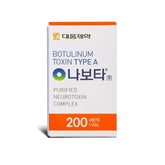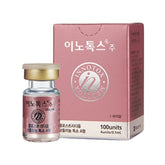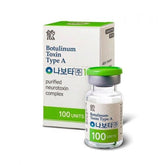Tips for Using Numbing Cream Safely and Effectively

Tips for Using Numbing Cream Safely and Effectively. Numbing creams, or topical anesthetics, are a boon for those seeking pain relief from various minor procedures like tattooing, piercing, or even injectable cosmetic treatments. When used correctly, these creams can significantly ease discomfort, making the experience more bearable. This blog post offers practical tips for using numbing cream safely and effectively, ensuring you get the pain relief you need without unwanted side effects.
Tips for Using Numbing Cream Safely and Effectively: Understanding Numbing Creams
Numbing creams contain active ingredients like lidocaine, prilocaine, benzocaine, or tetracaine, which work by temporarily blocking nerve signals in the skin. While these creams are available over the counter, it's essential to use them correctly to avoid complications such as skin irritation or systemic absorption issues.
Selecting the Right Numbing Cream
Ingredient Concentration:
Choose a cream with the appropriate concentration of active ingredients for your procedure. A dermatologist or healthcare provider can recommend the right product based on the intended use.
Skin Type Considerations:
Consider your skin type and any known allergies. If you have sensitive skin, opt for a numbing cream designed to minimize irritation.
Tips for Using Numbing Cream Safely and Effectively: Tips for Safe Application
Patch Test:
Before full application, conduct a patch test to check for any adverse reactions. Apply a small amount of the cream to the inner wrist and wait for any signs of redness, itching, or swelling.
Clean and Dry Area:
Ensure the area where you'll apply the cream is clean and dry to enhance absorption and reduce the risk of infection.
Follow Instructions:
Use the cream as directed on the packaging or by a healthcare professional. This includes the amount to apply, how long to leave it on, and the coverage area.
Proper Timing:
Apply the cream at the recommended time before the procedure to ensure maximum effectiveness. Most creams take about 30 to 60 minutes to work.
Avoid Sensitive Areas:
Be cautious when applying numbing cream near the eyes, mouth, and other sensitive regions. If the procedure involves these areas, seek professional advice.
During the Procedure
Inform the Practitioner:
Always inform the practitioner that you've applied numbing cream and where it has been applied.
Wear Gloves if Self-Applying:
If you're applying the cream yourself, wear gloves to prevent numbing your fingers.
Tips for Using Numbing Cream Safely and Effectively: Post-Application Care
Remove Excess Cream:
After the procedure, or once the recommended duration has passed, remove any excess cream with a tissue or cloth and wash the area with soap and water.
Monitor for Reactions:
Keep an eye on the treated area for several hours after application for any signs of a reaction, especially if it's your first time using the product.
Tips for Using Numbing Cream Safely and Effectively: Safe Storage and Handling
Keep Out of Reach of Children:
Store the cream in a safe place, out of reach of children, to prevent accidental ingestion or application.
Check Expiry Date:
Expired numbing creams may be less effective and could cause skin irritation. Always check the expiration date before use.
Dosage Considerations
Do Not Over-Apply:
More is not always better. Over-applying numbing cream can lead to increased risk of systemic absorption and adverse effects.
Area of Application:
Only apply the cream to the area where pain relief is needed. Avoid using it on large skin surfaces unless instructed by a professional.
Tips for Using Numbing Cream Safely and Effectively: Understanding Potential Side Effects
Know the Signs:
Familiarize yourself with the potential side effects of numbing creams, such as redness, swelling, and tingling. If you experience any severe reactions, seek medical attention immediately.
Consulting with a Professional
Seek Professional advice.
For invasive procedures or if you have underlying health conditions, consult with a healthcare professional before using numbing cream.
Combining with Other Medications
Medication Interactions:
Inform your healthcare provider about any other medications you're taking, as numbing creams can interact with certain drugs.
Numbing creams can significantly improve the comfort of various minor procedures when used safely and effectively. By following these tips, you can minimize discomfort and reduce the risk of potential side effects. Remember, while numbing creams are accessible, they are not without risks, and responsible use is paramount for a safe and successful experience.





